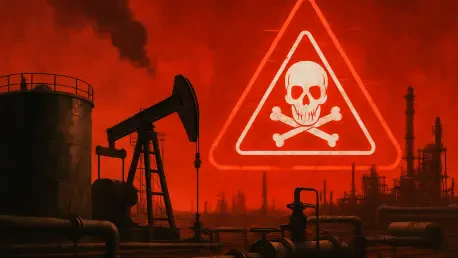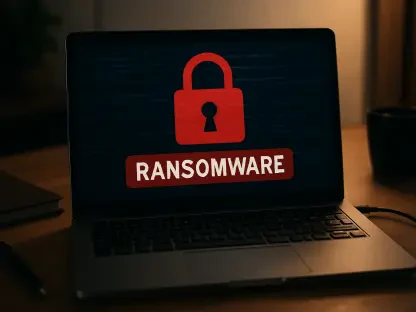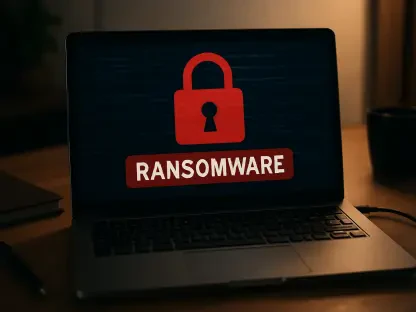The oil and gas sector has witnessed an unprecedented rise in ransomware attacks, with incidents skyrocketing by 935% from April 2024 to April 2025. This alarming surge in cyberattacks results directly from the industry’s increasing reliance on digital infrastructure and automation. As companies embrace innovation and digitize their processes, they inadvertently expand their attack surface, making themselves more attractive targets for cybercriminals. This trend comes amid broader cybersecurity threats that permeate several industries, but the oil and gas sector has become a focal point due to its rapid technological advancements and critical nature.
Key Industry Vulnerabilities
A comprehensive report from cybersecurity firm Zscaler highlights the heightened vulnerabilities within the oil and gas sector. While other industries, such as manufacturing and healthcare, continue to be prominent targets, the swift digital transformation in oil and gas exposes unique risks. Critical operations depend heavily on complex industrial control systems, which, when insecurely implemented, can become prime targets for cybercriminals seeking to exploit weak points. The transition from traditional methods to technologically driven solutions has outpaced cybersecurity measures, leaving many companies grappling with the challenges of protecting sensitive data and essential operations.
The increasing automation of industry processes has also led to the broader adoption of Internet of Things (IoT) devices, which, if not adequately secured, can serve as gateways for attackers. Coupled with the rapid integration of these devices is the insufficient segmentation within networks, amplifying the potential damage of an attack. Companies in the oil and gas sector are at a critical juncture; they must balance innovative advancements with robust cybersecurity protocols to ensure that their newfound digital efficiencies do not come at the expense of security.
Evolving Ransomware Strategies
The reported spike in ransomware incidents reflects an evolution in attack strategies, marked by a shift from traditional encryption-only methods to more sophisticated data extortion techniques. Attackers today are not only encrypting data but also stealing it, leveraging the stolen information for extortion and intensifying the pressure on their targets. This pivot toward data theft has seen a staggering 92% increase in the volume of stolen data year-over-year, underscoring the need for oil and gas companies to reassess their data protection strategies.
Prominent ransomware groups like RansomHub, Akira, and Clop have been at the forefront of this trend. Akira, in particular, has gained traction through its affiliate model, allowing criminals to expand their operations rapidly. Clop’s approach, focusing on vulnerabilities within third-party software, highlights the growing threat of supply-chain attacks that exploit dependencies on external providers. This strategic shift by ransomware actors demands a proactive response from industry leaders to bolster their defenses against not just direct attacks but also those that penetrate through allied software systems.
The Need for Enhanced Cybersecurity Measures
The threat landscape mapped out by the recent surge in ransomware attacks has made it imperative for the oil and gas industry to reassess its cybersecurity posture. With the increasing complexity of ransomware campaigns, which frequently exploit a limited number of widely used software vulnerabilities, there is a pressing need to deploy robust digital defenses. Widely used systems, including SonicWall and Fortinet VPNs and VMware hypervisors, are often targeted, emphasizing the urgent necessity for comprehensive patch management and regular threat assessments.
Awareness and education within the workforce are also crucial components of a holistic security strategy. Human error continues to be a significant vulnerability that attackers exploit; hence, training employees to recognize phishing attempts and understand security best practices can act as a critical line of defense. This multifaceted approach should not only encompass immediate tactical measures but also involve strategic planning to forecast and mitigate future risks.
Proactive Digital Defense Strategies
The oil and gas industry has experienced a dramatic increase in ransomware attacks, with the number of incidents soaring by 935% between April 2024 and April 2025. This significant rise in cyberattacks is primarily due to the industry’s growing dependence on digital systems and automation. As oil and gas companies adopt new technologies and digitize their operations, they unknowingly increase their vulnerability to cyber threats, making them appealing targets for cybercriminals looking to exploit weaknesses. This trend is part of a larger pattern of cybersecurity threats affecting numerous sectors, yet the oil and gas industry has become particularly vulnerable owing to its swift technological advancements and the fundamental role it plays in the global economy. The sector’s critical infrastructure and essential nature make it an attractive focus for hackers. Furthermore, the reliance on connected systems ensures that disruptions can have wide-reaching impacts, a factor that underscores the need for enhanced cybersecurity measures to protect these vital resources.









